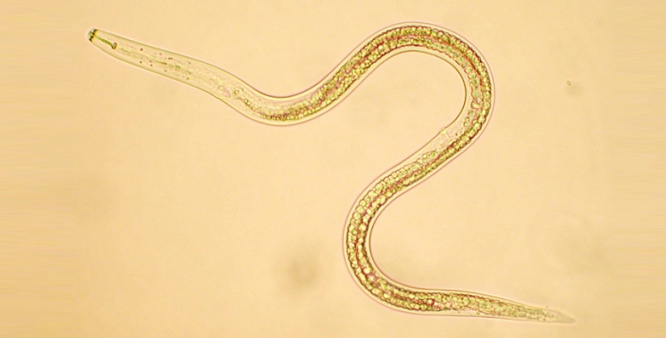Scientists in Princeton University have developed an instrument that allows three-dimensional recordings of neural activity in nearly the entire brain of a free-moving animal. The recordings could provide scientists with a better understanding of how neurons coordinate action and perception in humans.
Nematodes are 1 mm long with a nervous system containing just 302 neurons.
The team found that, across different specimens, multiple neurons showed significant correlations with modes of behavior corresponding to forward, backward and turning locomotion.
A spinning-disk confocal microscope captured 3D volumetric fluorescent images of neurons expressing the calcium indicator GCaMP6s at 6 head-volumes per second.
The setup included a suite of three cameras to monitor neuronal fluorescence, as well as the worm’s position and orientation. Custom software tracked the 3D position of the worm’s head in real time, and two feedback loops adjusted a motorized stage and objective to keep the head within the field of view as the worm roamed freely.
The researchers observed calcium transients from up to 77 neurons for over four minutes and correlated this activity with the worm’s behavior.
“Neuroscience is at the beginning of a transition towards larger-scale recordings of neural activity and towards studying animals under more natural conditions,” said Princeton fellow and lecturer Andrew Leifer, who led the work. “This work helps push the field forward on both fronts.”
A current focus in neuroscience is understanding how networks of neurons coordinate to produce behavior, Leifer said. The technology to observe numerous neurons as an animal performs normal activities, however, has been slow to develop because neural networks are infinitesimal arrangements of chemical signals and electrical impulses that can include, as in humans, billions of cells.
The simpler nervous system of the nematodes provided the researchers with a manageable testing ground for their instrument.
It also could reveal information about how neurons work together that applies to more complex organisms, the researchers said. For instance, they were surprised by the number of nematode neurons involved in the seemingly simple act of turning around.













